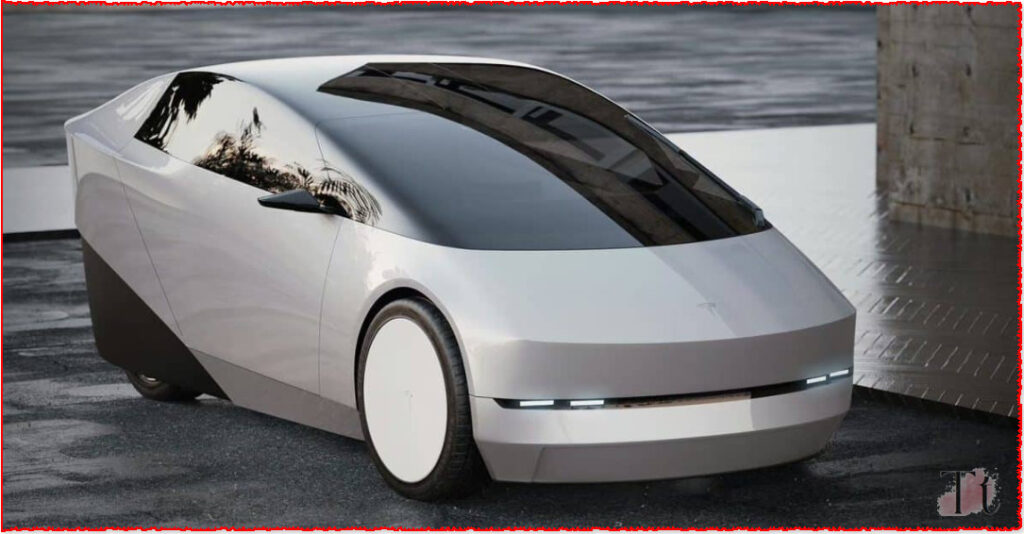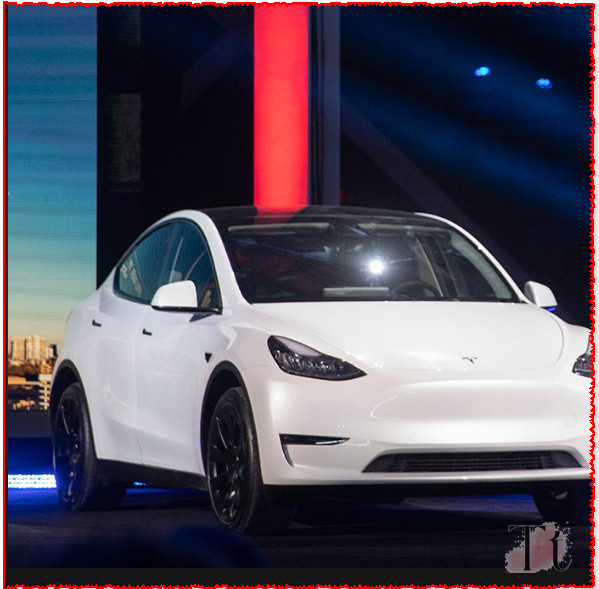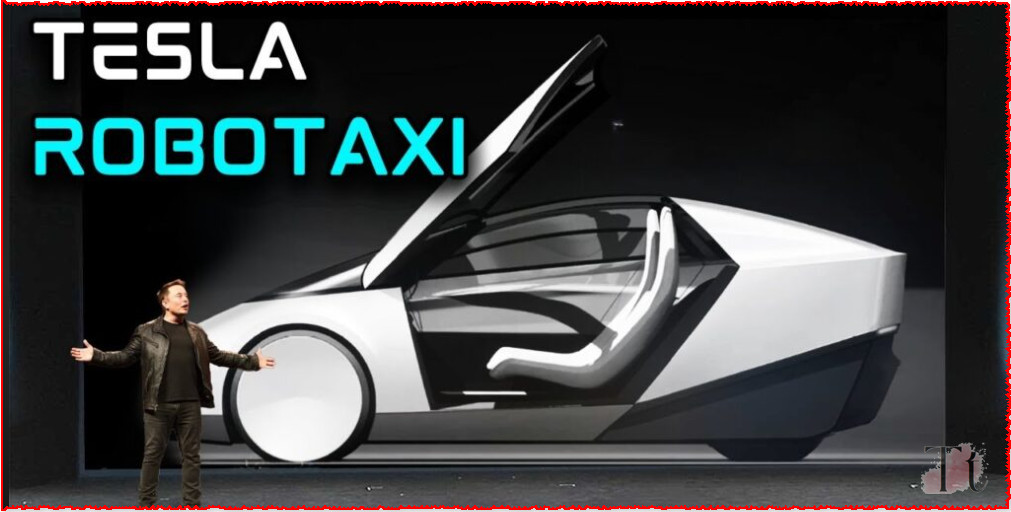The electrical vehicle maker Tesla’s CEO Elon Musk is well known for his super long term visions and the revolutionary ideas he has embarked upon. It does not matter if he is pioneering a new form of automobile through electric cars or launching rockets through space x. More recently, Musk has presented the latest Tesla’s creation – a fully autonomous “Cybercab” a robotaxi in a canned vision to change the idea of urban mobility.
Table of Contents
Alongside the Cybercab, Musk introduced another surprising innovation that caught the world’s attention: Tesla’s “Robovan.” Delivered during the much hyped event, these statements signal the beginning of the next phase of Tesla’s journey and could alter profoundly the way we look at personal and more importantly public mobility in the foreseeable future.

The Unveiling of the Tesla Cybercab
The focal highlight of the launch event was the famed so-called “Cybercab,” a fully electric, self-driving taxi-like robot with no need for human operators. The Cybercab is new in Tesla’s self-propelled car plans but something the company has been working on for years in Full-Self Driving or FSD. Musk has for years painted Tesla’s picture of a world where people do not individually own cars but instead share fleet of self-driving cars which they can order on an as-needed basis just like Uber or Lyft. The Cybercab is the type of car that Tesla envisions as the future of automobile industry.
Cybercab resembles the firm’s Cybertruck, an electric car that garnered attention for its daring and sleek appearance. In making the Cybercab, the creators have maintained the general perception of the car as a driverless vehicle of the future through the sharp angularity of the Cybertruck that shapes the entire exterior of the car. However, the extent of change exists in the capacities of the vehicle as opposed to its appearance.
The Cybercab is built to operate using the Tesla model 3 driving and software hardware similar to streets, highways and several territories of the city without human input. Having cameras along with radar, the car can learn about the overall perception of its environment and make decisions based on traffic issues, pedestrians, and road conditions in a matter of real-time. It has been under development for a long time and has experienced improvements, yet at the same time has incited proper controversy. Safety concerns arise at the core of self-driving systems, while Tesla believes FSD will significantly improve the number of fatalities resulting from human factors, making up the globally high percentage of all recorded deaths in traffic accidents.
Tesla’s Robotaxi Vision
It comes as no surprise that Musk recently presented the Cybercab as part of Tesla’s plan to launch a robotaxi service that will alter the nature of transportation. The concept is that the Tesla owners can enter their cars into the robotaxi system when they are not using them, so the cars will earn money for their owners as well as serve as a transport for other people.
Basically, this makes the creation of an independent decentralized ride hailing sharing system in which the cars are owned but are work as a unified plug and play fleet. It appears highly scalable, cost-effective, and logical compared to outright car ownership and use and, therefore, has the potential to scale effectively than owning private cars.
Musk has said this before that Tesla’s plan is to see a million robotaxis on the road in near future and the Cybercab could be among the first such model. Some of the physical aspects of its design such as a slim look and some other elements are not only flashy, but have certain practical elements tap into. There is good space in the car’s interior which does not require a driver seat or a steering wheel which makes more space for the passengers. The Cybercab will also include sophisticated forms of Infotainment systems to ensure the interior passengers have an enthralling and easy ride.

Tesla robotaxi vision can be associated with the overall tendencies towards the MaaS, the model of transport consumption when individuals do not own cars but acquire transportation services instead. It can therefore be said that MaaS plays an important role for urban mobility in the future as it can help to decrease car density, the amount of pollution and create a better access to a mobility offer. Introducing the Cybercab, Tesla could contribute the progress towards the usage of self-driving vehicles in everyday use.
Robovan: The Unexpected Surprise
While the Cybercab was the star of the show, Elon Musk had another surprise up his sleeve that captured the audience’s imagination: the Tesla Robovan. While not as flashy as the Cybercab, the Robovan suggests a new possibility for innovation that Tesla has been eager to explore. This electric van is intended to be able to fit people’s needs from private life as well as business ones with the focus on practicality and functionality. It is a completely self-driving car like the Cybercab that is designed to meet various aspects of life’s requirements with the capability for family use, transportation of goods and parcels.
The Robovan stands out as the most innovative because it innovates on a market segment that has developed much slower than passenger cars and trucks. While electric vans are not a new development – Rivian and Mercedes-Benz have already started offering electric delivery vans, Tesla’s Robovan puts high autonomous driving and high electric performance into the category. The Robovan is expected to enhance efficiency and cost effectiveness of business entities that employ large number of vehicles for delivery services.
Another fact that distinguishes the Robovan is the possibility of its use in future Tesla robotaxi fleets. While the Cybercab is conceptualized hence as being focused specifically on passenger transport the Robovan on the same network might be used for a variety of roles as a multi-service vehicle. It could be used for ridesharing, but also for delivery, to move things from one place to another without humans having to drive. This characteristic could make the Robovan an essential unit in the expansive network that is Tesla’s transport solutions portfolio, ranging from private use to business and trades use.
Tesla’s Autonomous Future
The Cybercab and Robovan are both a part of this vision that Musk has for Tesla as being synonymous with autonomy. Musk has been particularly keen to point out the fact that Tesla is a technology company in a car manufacturing company. He has ambitious plans for the mobility of the future and an electrified, autonomously navigated vehicle with artificial intelligence on board.
Self-driving technology is going to be one of the cornerstones of this vision, and Tesla has heavily placed its bets on its Full Self-Driving (FSD). This technology was introduced some time ago, but controversy has surrounded its development throughout the years. Some of the brilliant minds in automotive have criticized that self-driving technology is not ready for mass implementation because of safety, regulation, and ethically standard issues. Musk has always been optimistic about the future of FSD, stating that it will one day reduce the number of accidents and this will be through self-driving.
The Cybercab and Robovan are the next instalment in this self-driving scenario. Both cars have the most advanced version of Tesla FSD, which has been growing in capability through latest firmware updates. What this means is that the vehicles would not only grow to be safer with time, but would also acquire additional functionalities and efficiencies as Tesla upgrade its software.
The Possibility of Sustainable Future
Other than independence, another theme that dominated the occasion was sustainability. Even before the recent reports of global warming, Musk has been an advocate of electric vehicles as a fix to the world’s problems with ICEs. The Cybercab and Robovan are both electrically powered vehicles to help Tesla to bring change in the world with sustainable energy solutions. Lacking any emissions, these vehicles are marketed as clean transport options for use in place of gasoline or diesel-powered taxis and delivery trucks.
As it is aware that pollution and traffic congestion are severe issues in urban areas across the world, the advanced, electric, and autonomous vehicles such as Cybercab and Robovan can revolutionalise the transport industry. The direct urban benefits achievable through this way include reduction in transportation emissions, minimization of noise pollution, and more efficient utilization of the limited road space. Tesla’s robotaxi, for instance, could significantly help to spur such transition as it would mean less people would need personal cars to own.
Challenges Ahead
Two innovations, the Cybercab and Robovan, present new opportunities, yet certain issues that Tesla will need to solve before these vehicles can become a reality. The first significant challenge what one is likely to encounter is the getting of a license. It should be noted that full recognition of autonomous driving technology from a legal point of view is still in its initial stage when many governments worldwide still lack the properly developed adequate legislation on the AVs operation. Safety standards are important in ensuring the company’s vehicles get the approval of the government to operate on the roads.
The another difficulty is a question of perception by the public. Self-driving cars have not been welcomed with enthusiasm by many people as many of them are coming out with endless accidents. For the public to accept the FSD technology from Tesla, the company has to undertake a campaign and convince its consumers that the Model 3 is a safe car. They are perhaps likely to take several years of real-world testing and deployments for consumers to accept them as they are for the autonomous taxi case.

Third is the issue of infrastructure. In order for Tesla’s robotaxi network to at least be manageable, cities will have to develop the necessary infrastructure for the large scale deployment of AVs. This may involve provision of basic facilities such as charging facilities for self-driving cars, separate lanes for self-driven cars and most probably new traffic controlling systems to handle the changes that will accrue from the new technology. Even as Tesla has invested time into the Supercharger strategy, robotaxis will rely on continued growth and improvements in this site.
Conclusion: A Glimpse into the Future
With the presentation of Tesla’s Cybercab and Robovan that is an essential stage of the development of transportation has been reached. These vehicles are not just electric cars; they are a glance into the future of Autonomy, sustainability, Mobility. Some people joke that Elon Musk wants everybody to stop owning cars and to instead use only fleets of autonomous taxis, but with the Cybercab and the Robovan, Tesla is much closer to realizing that dream.
There are however key challenges that personnel to do with the autonomous electric vehicles must overcome including regulation, infrastructure, and perception. Lowered congestion, decreased pollution, and greater accessibility are only some of the benefits that Tesla’s robotaxi system may provide. The Cybercab and Robovan are a giant step in this direction and, as Tesla is always setting up the bar higher, the prospects of transportation seems brighter than ever.
Read more about St. Lucie Florida 1: Tornadoes, Floods, and Hurricane Havoc

